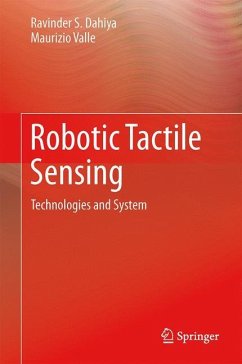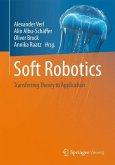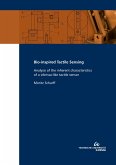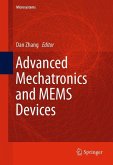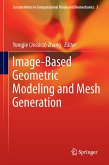Future robots are expected to work closely and interact safely with real-world objects and humans alike. Sense of touch is important in this context, as it helps estimate properties such as shape, texture, hardness, material type and many more; provides action related information, such as slip detection; and helps carrying out actions such as rolling an object between fingers without dropping it. This book presents an in-depth description of the solutions available for gathering tactile data, obtaining aforementioned tactile information from the data and effectively using the same in various robotic tasks.
The efforts during last four decades or so have yielded a wide spectrum of tactile sensing technologies and engineered solutions for both intrinsic and extrinsic touch sensors. Nowadays, new materials and structures are being explored for obtaining robotic skin with physical features like bendable, conformable, and stretchable. Such features are important for covering various body parts of robots or 3D surfaces. Nonetheless, there exist many more hardware, software and application related issues that must be considered to make tactile sensing an effective component of future robotic platforms. This book presents an in-depth analysis of various system related issues and presents the trade-offs one may face while developing an effective tactile sensing system. For this purpose, human touch sensing has also been explored. The design hints coming out of the investigations into human sense of touch can be useful in improving the effectiveness of tactile sensory modality in robotics and other machines. Better integration of tactile sensors on a robot's body is prerequisite for the effective utilization of tactile data.
The concept of semiconductor devices based sensors is an interesting one, as it allows compact and fast tactile sensing systems with capabilities such as human-like spatio-temporal resolution. This book presents acomprehensive description of semiconductor devices based tactile sensing. In particular, novel Piezo Oxide Semiconductor Field Effect Transistor (POSFET) based approach for high resolution tactile sensing has been discussed in detail. Finally, the extension of semiconductors devices based sensors concept to large and flexile areas has been discussed for obtaining robotic or electronic skin.
With its multidisciplinary scope, this book is suitable for graduate students and researchers coming from diverse areas such robotics (bio-robots, humanoids, rehabilitation etc.), applied materials, humans touch sensing, electronics, microsystems, and instrumentation. To better explain the concepts the text is supported by large number of figures.
The efforts during last four decades or so have yielded a wide spectrum of tactile sensing technologies and engineered solutions for both intrinsic and extrinsic touch sensors. Nowadays, new materials and structures are being explored for obtaining robotic skin with physical features like bendable, conformable, and stretchable. Such features are important for covering various body parts of robots or 3D surfaces. Nonetheless, there exist many more hardware, software and application related issues that must be considered to make tactile sensing an effective component of future robotic platforms. This book presents an in-depth analysis of various system related issues and presents the trade-offs one may face while developing an effective tactile sensing system. For this purpose, human touch sensing has also been explored. The design hints coming out of the investigations into human sense of touch can be useful in improving the effectiveness of tactile sensory modality in robotics and other machines. Better integration of tactile sensors on a robot's body is prerequisite for the effective utilization of tactile data.
The concept of semiconductor devices based sensors is an interesting one, as it allows compact and fast tactile sensing systems with capabilities such as human-like spatio-temporal resolution. This book presents acomprehensive description of semiconductor devices based tactile sensing. In particular, novel Piezo Oxide Semiconductor Field Effect Transistor (POSFET) based approach for high resolution tactile sensing has been discussed in detail. Finally, the extension of semiconductors devices based sensors concept to large and flexile areas has been discussed for obtaining robotic or electronic skin.
With its multidisciplinary scope, this book is suitable for graduate students and researchers coming from diverse areas such robotics (bio-robots, humanoids, rehabilitation etc.), applied materials, humans touch sensing, electronics, microsystems, and instrumentation. To better explain the concepts the text is supported by large number of figures.
Ravinder S. Dahiya and Maruizio Valle, Springer-Verlag, New York, 2013, 245 Pages. This book focuses on tactile sensing in robotics. Designing a robotic system that can successfully and safely integrate with human-centered society requires careful attention to this topic. To be as capable and aware of our environment as we are, humans use tactile information at many levels. Removing or altering any feature of our tactile system (through injury or disease) tends to reduce our capabilities tremendously, often severely impairing locomotion or manipulation.
For example, there is a case described in this book in which a patient lost most of his sense of touch (all kinesthetic and most cutaneous sensations) due to an unfortunate neural disease, and he collapsed on the floor as a result when attempting to stand, unable to control his joints, often striking himself by accident. Considering that most robots have little or no sense of touch, and certainly nothing at the level of a human, we begin to analyze why they are so limited in capability (and why they have yet to be successfully integrated into society as service robots).
But how can we measure and process the massively complex and highdimensional tactile information? How can this information be integrated into control algorithms, and why should we as designers even go through the effort? This book offers insightful answers to these and many other related questions. It provides an excellent perspective on this complex topic, bringing together hardware, theory, design, and application seamlessly.
This book is composed of eight chapters and three appendices. In addition, this book is broken into two parts: 1) technologies and systems (Chapters 1-5) and 2)integrated tactile sensing (Chapters 6-8). The authors created a logical flow, beginning with careful motivation in Chapter 1 as to why the sense of touch is important, as well as carefully defining touch and tactile sensing in Chapter 2. Chapter 3 provides an overview of the physiology and neurophysiology of tactile sense in humans, providing a motivation for the requirements laid out in Chapter 4. There are a number of ways to measure tactile information, and Chapter 5 describes several methods, including resistive, capacitive, optical, magnetic, ultrasonic, and piezoelectric measurement. Chapter 6 (the beginning of Part II) describes integrated tactile sensing on silicon, while Chapters 7 and 8 describe piezoelectricoxide- semiconductor-field-effect-transistor- based tactile sensing chips. The appendices offer reviews of the fundamentals of piezoelectricity, modeling of piezoelectric polymers, and the design of high-input-impedance charge/voltage amplifiers suitable for these sensors. There are many useful references provided at the end of each chapter, and the index and table of contents are quite helpful in navigating the information. This book is clearly organized and well developed.
Anyone could find this book very informative and readable. At times, there can be a high information density, but there is quite a bit to go through. It is not a heavily equation-based book, which aids in the readability and flow. This book can be useful as a reference, a textbook, or for those looking to expand their understanding of the current and future state of the art in robotic tactile sensing. Overall, Robotic Tactile Sensing: Technologies and System provides an excellent presentation of the increasingly significant and rapidly developing topic of providing the tactile sense to robots.
-Reviewed by
Alex Simpkins,Ph.D., San Diego, California
June 2013 - IEEE ROBOTICS & AUTOMATION MAGAZINE
For example, there is a case described in this book in which a patient lost most of his sense of touch (all kinesthetic and most cutaneous sensations) due to an unfortunate neural disease, and he collapsed on the floor as a result when attempting to stand, unable to control his joints, often striking himself by accident. Considering that most robots have little or no sense of touch, and certainly nothing at the level of a human, we begin to analyze why they are so limited in capability (and why they have yet to be successfully integrated into society as service robots).
But how can we measure and process the massively complex and highdimensional tactile information? How can this information be integrated into control algorithms, and why should we as designers even go through the effort? This book offers insightful answers to these and many other related questions. It provides an excellent perspective on this complex topic, bringing together hardware, theory, design, and application seamlessly.
This book is composed of eight chapters and three appendices. In addition, this book is broken into two parts: 1) technologies and systems (Chapters 1-5) and 2)integrated tactile sensing (Chapters 6-8). The authors created a logical flow, beginning with careful motivation in Chapter 1 as to why the sense of touch is important, as well as carefully defining touch and tactile sensing in Chapter 2. Chapter 3 provides an overview of the physiology and neurophysiology of tactile sense in humans, providing a motivation for the requirements laid out in Chapter 4. There are a number of ways to measure tactile information, and Chapter 5 describes several methods, including resistive, capacitive, optical, magnetic, ultrasonic, and piezoelectric measurement. Chapter 6 (the beginning of Part II) describes integrated tactile sensing on silicon, while Chapters 7 and 8 describe piezoelectricoxide- semiconductor-field-effect-transistor- based tactile sensing chips. The appendices offer reviews of the fundamentals of piezoelectricity, modeling of piezoelectric polymers, and the design of high-input-impedance charge/voltage amplifiers suitable for these sensors. There are many useful references provided at the end of each chapter, and the index and table of contents are quite helpful in navigating the information. This book is clearly organized and well developed.
Anyone could find this book very informative and readable. At times, there can be a high information density, but there is quite a bit to go through. It is not a heavily equation-based book, which aids in the readability and flow. This book can be useful as a reference, a textbook, or for those looking to expand their understanding of the current and future state of the art in robotic tactile sensing. Overall, Robotic Tactile Sensing: Technologies and System provides an excellent presentation of the increasingly significant and rapidly developing topic of providing the tactile sense to robots.
-Reviewed by
Alex Simpkins,Ph.D., San Diego, California
June 2013 - IEEE ROBOTICS & AUTOMATION MAGAZINE

